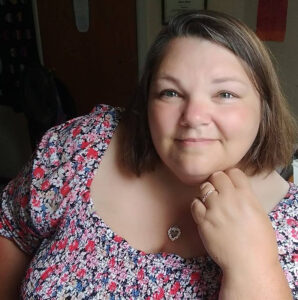One in four high school students identifies as LGBTQ, according to the CDC
By Barbara Pierce
“I’m the scary transgender person the media warned you about!” proclaimed a sign held by a cute little 10-year-old girl with pink hair.
She wasn’t scary at all.
Of course, that was the point. It went viral and the little girl, Rebekah, began using her voice to make the world better for kids like her.
“From the time I was born, I knew I was a girl, but the world didn’t. When I went out into the world as Rebekah, there was this burst of joy. I could be myself!” Rebekah Bruesehoff, now 16 years old, of Vernon Township, New Jersey, told ABC news.
Bruesehoff is transgender. When she was born, everyone thought she was a boy, but she knew herself to be a girl.
After an intense period of anxiety and depression, with the support of her family and medical professionals, Bruesehoff transitioned at the age of 8. She changed her name and went out into the world as herself. She no longer had to pretend to be someone she wasn’t.
In 2022, Gallup Polls asked people across the country whether they identify as straight, lesbian, gay, bisexual or transgender. The CDC also surveyed adolescents, asking similar questions.
The results were stunning and unprecedented. Fewer teens than ever identify as heterosexual, according to the CDC. One in four high school students identifies as LGBTQ.
LGBTQ+ is an evolving term, standing for lesbian, gay, bisexual, transgender and queer, or questioning. It refers to people who aren’t heterosexual. It’s also for people who don’t identify with the sex they were assigned at birth.
The “+” includes those who do not identify as either male or female and those who are attracted to many genders or to individuals regardless of gender and includes those with little sexual attraction to others.
Both studies found that for the youngest generations sampled — millennials (born between 1981-1996) and generation Z (born between 1997-2003) — the numbers of those identifying as LGBTQ had doubled since a 2012 survey.
Since Gallup began measuring LGBT identification in 2012, the percentage of baby boomers and generation X adults has remained relatively stable, generally around 7%. (generation X is the generation after baby boomers.)
Why the increase in young people?
Many in the LGBTQ+ community believe that increased general acceptance may be the reason why their numbers are so high.
For LGBTQ teenagers, high school is a more accepting place. They can change their pronouns, go to school dances with those of the same gender, and are more likely to openly identify their differences.
Parents today are considerably more accepting of their LGBTQ child than in the past.
For many youth, breaking the news to parents is the scariest part of coming out. Acceptance by parents is key to growing up happy.
The explosion of social media is a big driver of the increase. Though it contributes to bullying and other mental health issues, for many LGBTQ teens, it’s been a boon.
The biggest driver of the increased number of teens identifying as LGBTQ may be the way the question was asked. It was asked in a way that included students who are questioning their sexual identity, who aren’t sure about it. Identity turmoil is definitely a part of adolescence.
The darker side

Even as they are increasingly accepted by peers, the mental health of those affirming they’re LGBTQ is significantly worse than that of heterosexuals.
“The moment we’re in is so scary in terms of the mental health crisis,” a professor at the University of Texas who studies LGBTQ youth told the New York Times recently. Many are depressed and consider or attempt suicide. A high percentage suffer verbal harassment or physical violence.
LGBTQ persons of all ages suffer.
“I was so angry at the world and sick of my own life. I spiraled down into a deep depression. I planned my suicide” is how Branwen Drew of Rome described her past before transitioning to a woman at 70. Drew called the Trans Lifeline and talked to a counselor. “She gave me hope and saved my life. A month later, I came out to the world as Branwen Drew.”
Drew and other advocates are alarmed about the political climate in the U.S. with the slate of anti-LGBTQ proposed legislation. It’s a scary time, they say.
Support is available

The Q Center at ACR Health provides a safe space for LGBTQ youth ages 5-29, with locations in Utica, Syracuse and Watertown.
Karen Fuller, family peer advocate at the Q Center said: “I work with parents and caregivers of LGBTQ youth of any age. I meet with parents one-on-one to answer questions or address concerns when their child first comes out.
“My work with parents, caregivers, is to help support, educate and connect them to services they might need. The goal is to help them gain a better understanding of this part of their child so they can become their child’s best advocate.”
“For parents, the primary concern they have when their child comes out is the future. They worry will my child be safe, will they be happy, who will love my child, will they be accepted, will they have a successful life?” she added. “Especially in today’s political climate, safety is a huge concern for many of these families.”
The young people that come to our center have a place where they can come and just be themselves and build community with others who are similar. Having these supports in place can help offset the losses they might experience when they come out.
Drew is enthusiastic about what the Unitarian Universalist Church of Utica offers as a welcoming congregation, affirming and including people who are LGBTQ at every level of congregational life. “We make everyone feel welcome and comfortable. I talk to new people, answer their questions, provide resources,” Drew said.
The Trevor Project is the leading suicide prevention and crisis intervention organization for LGBTQ+ young people. Their 24-hour hotline is 866-488-7386 or text 678-678.
“The biggest thing that people can do is to be allies,” Drew said. “We don’t just want your tolerance. We want your acceptance. It doesn’t matter why we are the way we are. We don’t even know that.”
